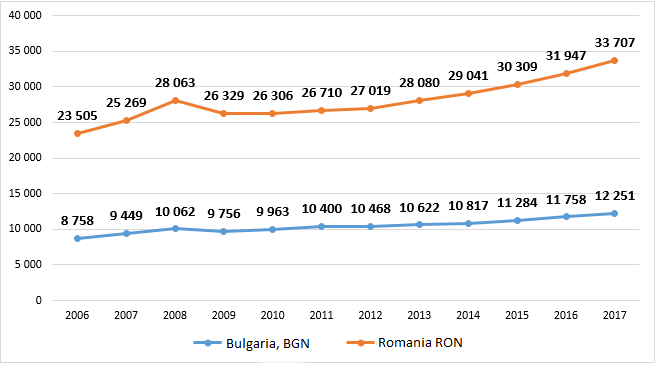Verdict: Information published at Georgia and the World’s website in regard to collapse of Bulgaria’s and Romania’s economies after their membership to the European Union is FALSE.
Resume: Information agency Georgia and the World has published an article entitled as “Collapse of Bulgaria’s and Romania’s Economies after their membership to the EU.” Information creates impression that it discusses the impact of EU membership upon Bulgaria’s and Romania’s economic development. In spite of the title, the aforementioned article does not include any specific figure which could possibly be used to assess the collapse of Bulgaria’s and Romania’s economies. At the same time, Georgia and the World’s article uses unreliable source to provide assessment of privatization of Romania’s state oil company and present public attitudes in Bulgaria’s population. However, those pieces of information are not authenticated neither in the Georgian analysis nor its original Russian version. Therefore, it is likely that the article deliberately spreads unverified information with fake cases attached to make negative public attitude towards the EU.
Analysis:
Romania and Bulgaria became the members of the European Union as a result of 2007 enlargement. As of 2016, Romania’s economy was USD 187 billion, which is USD 64 billion more as compared to the same figure of 2006. In case of Bulgaria, the country’s economy has increased by USD 20 billion as compared to period before Bulgaria’s EU membership and reached USD 53 billion. As of 2016, Romania’s gross domestic product (GDP) per capita was USD 9,400, whilst in Bulgaria that figure was USD 7,300. As of August 2017, unemployment rate in Romania is 5.1%, whilst in Bulgaria it is 6.2% (for comparison, unemployment rate in Georgia in 2016 was 11.8%).
World Bank’s historical statistics on economic growth demonstrates that Bulgaria and Romania have had their highest GDP growth highest after becoming members of the European Union. Bulgaria’s economic growth rate was 7.7% in 2007 and Romania’s economic growth rate was 8.5% in 2008. World Economic Crisis in 2009 negatively affected Bulgaria’s and Romania’s economic development. Therefore, since 2009 economic growth rate have slowed down after 2009. In accordance with the latest estimate, Romania’s and Bulgaria’s economic growth rate in 2017 will be 8.8% and 3.8% respectively (of note is that in light of economic growth it becomes increasingly difficult to achieve high economic growth rates).
In 2007, average annual income per capita was BGN 8,758. This figure rose by 40% in real terms (excluding inflation) and reached BGN 12,251. The same figure in Romania has increased by 43.4% since Romania’s accession to the EU and reached RON 33,707.
Graph 1: Annual Per Capita Income in Bulgaria and Romania
Source: International Monetary Fund
As of 2016 data, 75% of Romania’s exports were destined for the EU countries, 3% for Turkey and 2% for Russia, while 77% of Romania’s imports comes from the EU (5% from China and 4% from Turkey). The EU spent EUR 7.4 billion in Romania, which was 4.4% of the country’s total national income. EU is also the largest trade partner with Bulgaria. As of 2016, EU spending in Bulgaria constituted 6.3% of total national income.
Information given in Georgia and the World’s article in regard of damaging privatization of Romania’s state oil company is confidential and has not been published by any reliable source.
Even though neither Romania nor Romania is among the economic leaders of the EU, it is wrong to assume that their economies contracted or got worsened after the two countries had joined the EU. Moreover, in case of Romania, 2017 economic growth rate would be the best result for the country which will make Romania a leader in Europe and Central Asia region.










